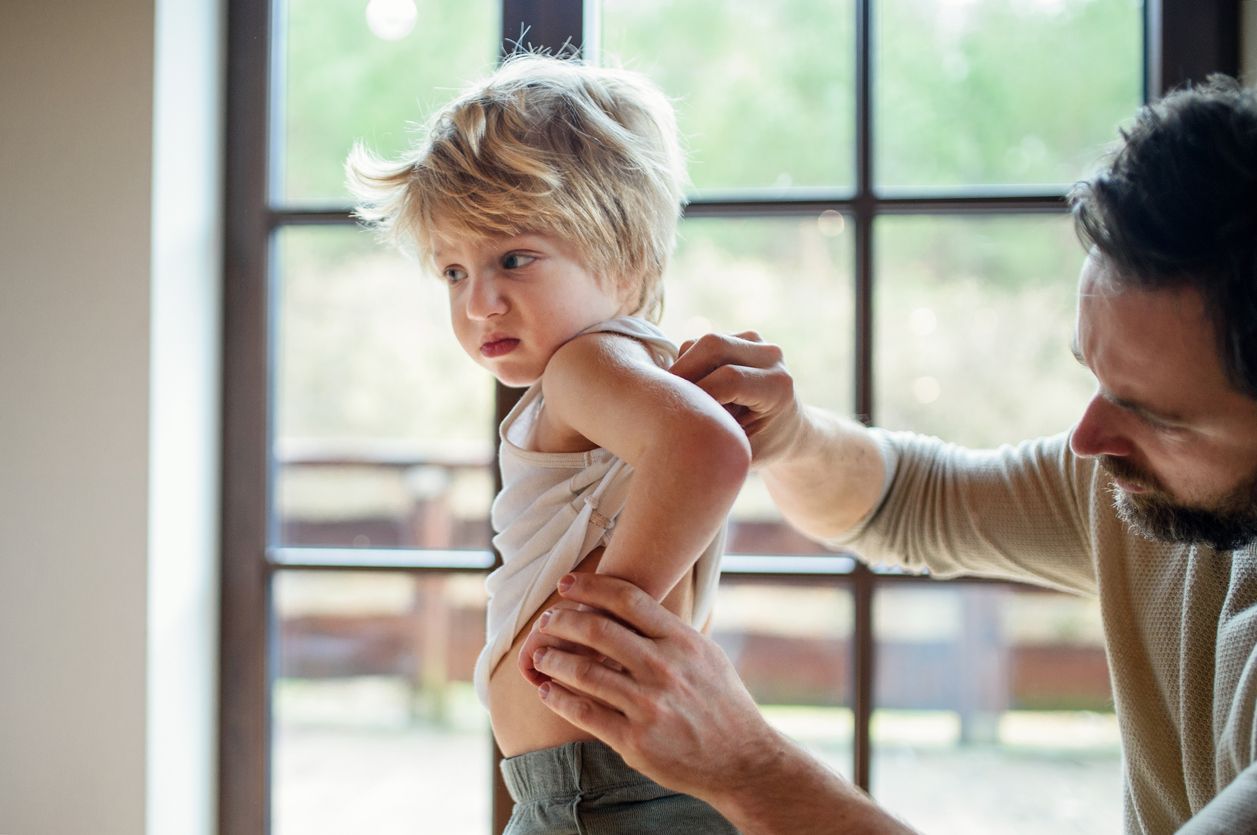Eczema
About Eczema
Eczema is a common skin condition in children. Also known as atopic (“allergic”) dermatitis, eczema affects 10 percent of children at some point in their childhood. Eczema in babies often appears on the scalp, cheeks, forehead, and around the mouth, while eczema in children is more likely to be found on the backs of the knees, the creases of the elbows, on the neck, or around the eyes. That said, eczema may appear anywhere on the body.
Causes of Eczema
There are a few potential causes of eczema:
- Dysfunction in the skin barrier. Specifically, children with eczema seem to lack a protein called filaggrin in the outer layer of the skin. This protein acts as a barrier; with insufficient filaggrin, the skin doesn’t retain water and environmental irritants can more easily seep in, creating the perfect conditions for eczema to develop.
- Genetics. Eczema often runs in families.
- Allergies. Children with eczema often have allergic conditions like asthma, hay fever, and seasonal allergies.
Eczema Treatments
Unfortunately, eczema in babies and children can be difficult to treat; there is no cure for eczema, and finding an effective treatment often involves some trial-and-error. We take a four-step approach to eczema treatment:
- Keep skin hydrated. This doesn’t just mean applying moisturizer regularly, but also avoiding hot baths and showers and any harsh soaps that strip oil from the skin.
- Relieve itching. When your child scratches eczema patches, it can dry them out further and increase their risk of infection. At night, have them wear cotton gloves or socks on their hands; keep nails cut short to prevent daytime scratching from breaking skin. In some cases, our Pediatric Services providers may recommend antihistamine medications.
- Heal the skin. Non-steroid eczema creams and topical steroids can help calm the inflammation associated with eczema. We try to avoid using steroid creams for extended amounts of time, as they can cause side effects, but usually when they’re combined with the other three treatments listed here, only a short course of steroids is needed to break the eczema cycle.
- Prevent skin infections. Be on the lookout for signs of infection, like oozing, crust, blisters, or areas of skin that feel warm to the touch.
Frequently Asked Questions About Eczema
What does eczema look like on a child?
Eczema usually appears as red patches with small bumps.
Can a child outgrow eczema?
Yes, most children do outgrow eczema as they get older, although they may still have dry skin even after their eczema flares have resolved.
What is the best cream for eczema?
There are several over-the-counter eczema creams made specifically for children that are gentle and effective. Look for thick creams and ointments Avoid products with colors or scents, as they can irritate the skin.
Should I take my child to the pediatrician for eczema?
If you suspect that your child’s eczema rash has caused an infection or if eczema is severe, make an appointment to bring your child in for an evaluation. Topical or oral antibiotics may be needed in case of infection, and with severe eczema flares, we can prescribe antihistamines and/or steroid creams to make your child more comfortable. If eczema is mild, follow the treatment steps outlined above and call us if you don’t see an improvement after a week or two.
Schedule an appointment with us to discuss your child’s eczema.


